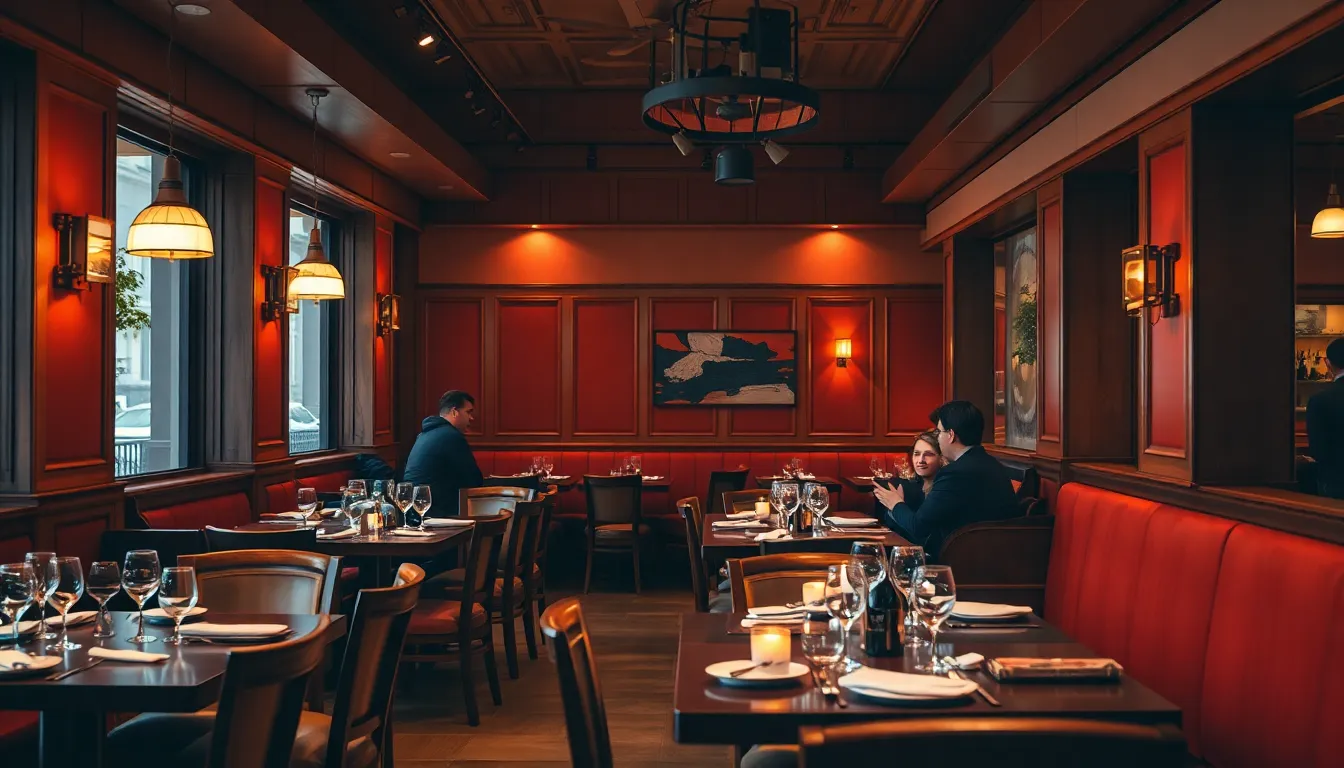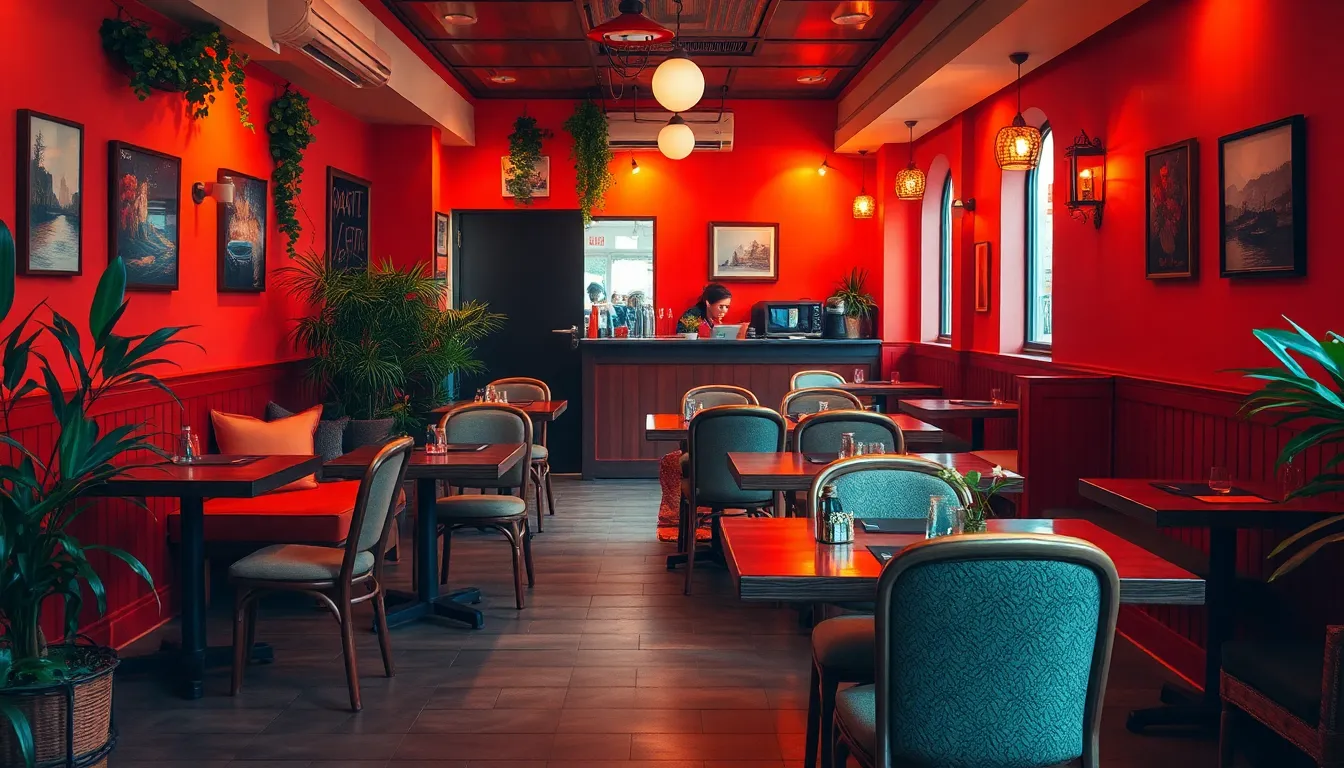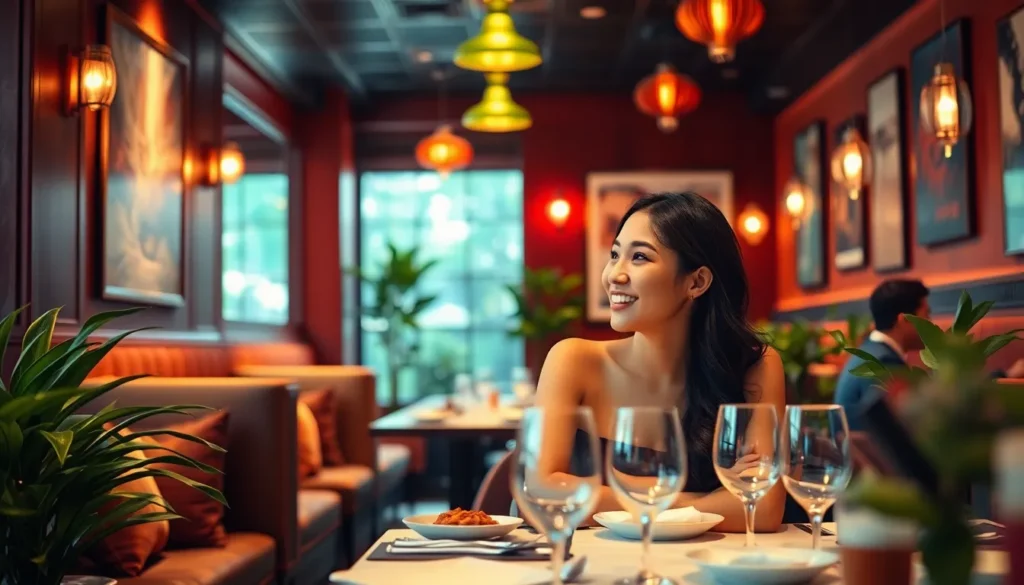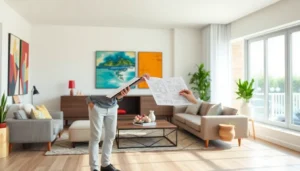When it comes to dining out, the experience isn’t just about the food—it’s about the ambiance. Imagine sinking your teeth into a perfectly cooked steak while surrounded by an interior that screams “Instagram-worthy.” Restaurant interior design plays a pivotal role in creating that unforgettable experience, blending aesthetics with functionality to keep patrons coming back for more.
From cozy nooks that invite intimate conversations to vibrant spaces that spark joy, the right design can transform a simple meal into a delightful adventure. It’s like dressing up your restaurant for a fancy date—first impressions matter! So, whether you’re a seasoned restaurateur or a hopeful newbie, understanding the magic of interior design can be the secret ingredient to your success. Let’s dive into the world of restaurant interiors and discover how to create spaces that not only please the eye but also tantalize the taste buds.
Importance Of Restaurant Interior Design
Restaurant interior design significantly influences customer perceptions and experiences. Ambiance creates a lasting impression that affects return visits and word-of-mouth marketing.
Setting The Mood
A restaurant’s design dictates its atmosphere and overall vibe. Elements such as lighting, color schemes, and furnishings cultivate specific feelings in diners. Soft lights create intimacy, while bright colors invigorate. Patrons often favor spaces that resonate with their preferences, as these details enhance comfort. Diners also associate unique decor with positive memories, strengthening loyalty. Therefore, thoughtful design choices help establish brand identity and connect emotionally with guests.
Enhancing The Experience
Interior design elevates the dining experience beyond just food. Strategic layouts encourage social interaction, making environments more engaging. Comfortable seating arrangements allow for relaxation during meals. Strategically placed artwork adds visual interest, creating conversation starters. Clear pathways facilitate movement and accessibility, enhancing overall flow. Each of these design aspects helps turn an ordinary meal into a memorable outing. As a result, satisfying experiences can convert first-time visitors into regular patrons.
Key Elements Of Restaurant Interior Design


Restaurant interior design involves essential components that shape the overall ambiance and dining experience. Key elements include color schemes, furniture selection, and lighting design, each contributing uniquely to the atmosphere.
Color Schemes
Color schemes play a vital role in setting the mood within a restaurant. Warm hues like reds and oranges can stimulate appetite and conversation. Cool tones such as blues and greens promote calmness and relaxation. Colors also represent brand identities, impacting customer perceptions. Selecting a cohesive palette ensures visual harmony, enhancing the dining experience.
Furniture Selection
Furniture selection directly influences comfort and functionality in a restaurant. High-quality materials should be prioritized for durability and comfort. Styles must align with the restaurant’s theme, creating an inviting atmosphere. Adjustable seating arrangements enhance flexibility for different dining experiences, accommodating couples, families, or larger groups. Thoughtful furniture choices foster social interactions among guests.
Lighting Design
Lighting design significantly enhances the overall ambiance of a dining environment. Different types of lighting, such as ambient, task, and accent, create layered effects that engage diners. Soft, warm lighting encourages relaxation while brighter lights can energize a space. Positioning fixtures strategically addresses functionality and aesthetics, illuminating key design elements. Effective lighting also establishes the restaurant’s personality, influencing customer perceptions.
Trends In Restaurant Interior Design
Restaurant interior design trends reflect evolving consumer preferences and social behaviors. Key trends today include sustainable design, minimalism, industrial styles, and cultural influences.
Sustainable Design
Sustainable design incorporates eco-friendly materials and practices. Many restaurants now prioritize energy-efficient lighting and recyclable furnishings. Organic materials like bamboo and reclaimed wood promote sustainability while enhancing aesthetics. Incorporating plants and biophilic elements improves indoor air quality, creating a more inviting atmosphere. Guests increasingly appreciate these environmental commitments, which can boost a restaurant’s reputation and customer loyalty.
Minimalism And Industrial Styles
Minimalism emphasizes simplicity, focusing on clean lines and uncluttered spaces. This style enhances the dining experience by allowing guests to enjoy their meals without distractions. Industrial design, characterized by raw materials and exposed elements, creates a unique, urban flair. Metal fixtures, open spaces, and distressed wood contribute to the overall ambiance. Both styles encourage a casual dining atmosphere, appealing to modern diners seeking relaxed experiences.
Cultural Influences
Cultural influences shape restaurant designs to reflect diverse themes and cuisines. Incorporating elements that pay homage to specific cultures creates authentic dining experiences. Decor, art, and color palettes inspired by regional aesthetics contribute to a cohesive look. Guests find immersive environments more engaging, enhancing their overall enjoyment. Such thoughtful incorporation of cultural elements fosters a deeper connection between patrons and the culinary offerings.
Tips For Successful Restaurant Interior Design
Successful restaurant interior design hinges on understanding customer preferences and functional layouts. Attention to detail enhances dining experiences and encourages repeat visits.
Understanding Your Target Audience
Identifying the target audience is essential for effective design. Young professionals may prefer contemporary aesthetics with vibrant colors, while families often seek comfort and spaciousness. Researching local demographics helps refine decor and seating choices, ensuring alignment with customer expectations. Engaging with feedback allows restaurants to tailor environments to specific tastes, promoting a unique atmosphere. Consideration of these aspects fosters connections with guests and reinforces brand identity.
Creating Flow And Accessibility
Establishing a smooth flow throughout the restaurant maximizes customer comfort. Strategic layouts enable diners to navigate easily, reducing congestion and enhancing overall ambiance. Grouping tables thoughtfully creates intimate spaces while maintaining openness. Opting for wide pathways ensures accessibility, including for patrons with mobility challenges. Incorporating flexible seating arrangements accommodates various group sizes, fostering an inviting environment for all guests. Effective flow encourages interaction and elevates the dining experience, keeping patrons engaged and satisfied.
Restaurant interior design is more than just aesthetics; it’s a vital component of the dining experience. By creating inviting spaces that resonate with customers, restaurateurs can significantly influence perceptions and encourage loyalty. The right design choices enhance comfort and foster connections, turning a simple meal into a cherished memory.
As trends evolve and customer preferences shift, staying attuned to these changes is essential. Embracing sustainable practices and unique styles can set a restaurant apart in a competitive market. Ultimately, a well-designed interior not only attracts diners but also cultivates an atmosphere that keeps them coming back for more.





